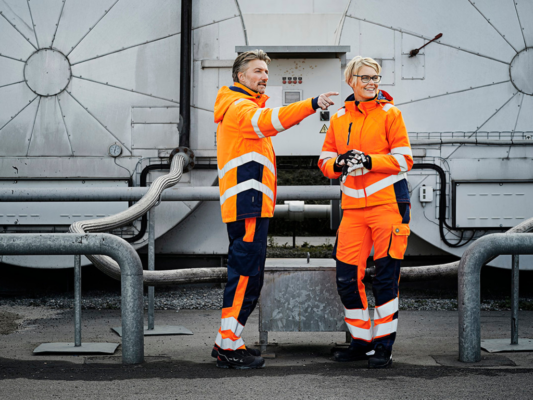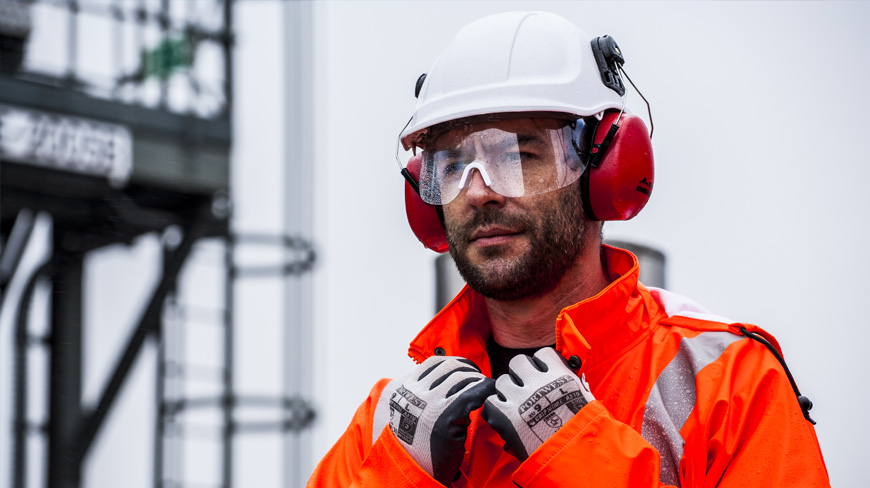No products in the basket.
PPE
What Is PPE?
What Is PPE?
Prior to the pandemic, many people were unaware of the term PPE and what the acronym stood for. PPE is an abbreviation of Personal Protective Equipment and put simply, it’s a term that covers any item worn by an individual to protect them from hazards in the workplace.
It is important to note that PPE must always be used as the last line of defence after all other risk assessments and health and safety measures have been implemented.
When Is PPE Needed?
There are many situations when PPE is needed but the level of PPE required will vary according to the risk level. PPE is a vital component of workplace safety and is needed to protect individuals from hazards in the workplace. This can include protection from sharp or falling objects, splashes from hazardous liquids or extreme temperatures. A risk assessment must be carried out by a health and safety officer and all employees must be educated about and be issued with the correct PPE for their specific job role.
What Jobs Require PPE?
Many jobs require PPE including the Construction, Emergency Services, Engineering, Logistics, Medical, Rail and Utilities sectors but the level of PPE required can vary greatly. An individual working in a medical environment might only require disposable nitrile gloves and a Type IIR mask while someone working where there is a risk of an arc flash explosion will require arc flash clothing, safety boots, safety gloves and a helmet. The quantity of PPE required is so variable across industries and job roles but it must always be used to ensure maximum levels of workplace safety.
What Are The Different Types Of PPE?
Personal protective equipment encompasses all products that provide protection to an individual when they are faced with a hazard. These products include:
- Head Protection
- Eye Protection
- Hearing Protection
- Safety Gloves
- Safety Footwear
- Respiratory Protection (RPE)
- Hi Vis Clothing
- Technical Protective Clothing
It is imperative that the correct type of PPE is worn to ensure optimum protection and avoid injury in the workplace. For example, an individual working at height must wear a safety helmet and chinstrap compliant with EN 12492 but head protection when working at ground level must be compliant with EN 397. Safety gloves have varying levels of cut protection ranging from Cut Level A to Cut Level F. Meanwhile, if protective clothing is needed, an employer must ensure their employees are dressed appropriately, eg wearing FR clothing when in fact arc flash clothing is required could result in a serious injury to the wearer if there was an arc flash explosion. All businesses must implement a strict health and safety policy especially if their employees work in a high risk environment.
What Is The Difference Between RPE And PPE?
RPE means respiratory protective equipment but is commonly referred to as PPE. RPE has been designed to protect wearers when working in environments where harmful substances can contaminate the air around us in the form of dust, mist, gas or fume. Just like other types of PPE, the type of RPE required will vary according to the risk. The HSE states that:
You will require RPE that is adequate and suitable to ensure the wearer is protected. This means:
Adequate – It is right for the hazard and reduces exposure to the level required to protect the wearer’s health.
Suitable – It is right for the wearer, task and environment, such that the wearer can work freely and without additional risks due to the RPE.
Clad Safety understand the need for wearing the correct type of RPE and the importance of face fit testing. We supply respiratory products include FFP3 respirators, reusable masks and filters and powered respirators.
Are you unsure about the level of respiratory protection you require? Check out our Safety Standards Guide or speak to our technical experts on 0800 161 3661.
How To Spot Fake PPE
Unfortunately, fake PPE does exist and the amount of it on sale (especially for respiratory protection) increased greatly during the pandemic due to supply and demand. Thankfully stock levels have since caught up and are now back at pre-pandemic levels. Fake PPE is not tested as stringently and therefore will not provide the wearer with the appropriate levels of protection. The best way to ensure you are equipping your team with fully certified PPE is to purchase it from an authorized distributor such as ourselves at Clad Safety. We are listed on the BSIF’s Safety Supplier Scheme which is dedicated to eliminating non-compliant, unsafe, counterfeit and illegal safety products from the UK market.
All PPE should be issued with a declaration of conformity but if you are unsure about the authenticity of your PPE, please get in touch with the technical experts here at Clad Safety or speak to the manufacturer of the product.
As mentioned previously PPE must always be used as the last line of defence in workplace safety after all other appropriate health and safety measures have been implemented. Hazards will always exist in the workplace especially in high risk working environments, but it is your duty, as an employer to mitigate these risks where possible and to always equip your team with the appropriate PPE for the job role.
If you require any assistance with your PPE range, please speak to the Clad Safety Team on 0800 161 3661 or email [email protected]. Clad Safety work with Procurement Managers, Health and Safety Managers and Buying Teams from large organisations across the Construction, Rail and Utilities sectors. With over 30 years of experience in the supply of technical workwear and PPE, we will work with you to keep your team protected and safe.




